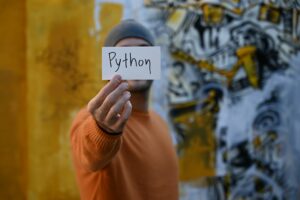Master Neural Structured Learning with TensorFlow: A Comprehensive Guide

Enhance your neural network training with TensorFlow’s Neural Structured Learning framework by integrating structured signals and input features.
Introduction
In the rapidly evolving field of machine learning, leveraging advanced techniques to improve model performance is crucial. One such technique is structured signal learning, which introduces structured information into the training process of neural networks. This comprehensive guide will delve into TensorFlow’s Neural Structured Learning (NSL) framework, exploring how it can enhance your machine learning models by integrating both structured signals and input features.
What is Neural Structured Learning?
Neural Structured Learning (NSL) is a novel paradigm that enhances neural network training by incorporating structured signals alongside traditional feature inputs. These structured signals can be explicit, such as graphs representing relationships between data points, or implicit, like adversarial perturbations designed to improve model robustness.
Structured vs. Unstructured Data
- Structured Signals: Represent relationships or similarities among samples, which can include both labeled and unlabeled data. Examples include social network graphs or similarity matrices.
- Unstructured Data: Traditional input features without inherent relational information, such as raw pixel values in images or individual sensor readings.
By integrating structured signals, NSL harnesses the power of both labeled and unlabeled data, leading to improved model accuracy and resilience against adversarial attacks.
Benefits of Structured Signal Learning in TensorFlow
Implementing structured signal learning within TensorFlow offers several advantages:
Enhanced Accuracy
Structured signals provide additional context about data relationships, enabling models to learn more nuanced patterns. This is particularly beneficial when labeled data is scarce, as the model can leverage the structure to make more informed predictions.
Robustness to Adversarial Attacks
Models trained with adversarial perturbations are better equipped to resist malicious attempts to deceive them. By incorporating these perturbations during training, structured signal learning enhances the model’s ability to maintain performance in the face of adversarial examples.
Flexibility and Scalability
TensorFlow’s NSL framework offers flexible APIs and tools that cater to various levels of model complexity. Whether you’re using high-level Keras APIs or lower-level TensorFlow operations, NSL seamlessly integrates structured signals into your training pipeline without affecting the inference performance.
Getting Started with TensorFlow’s NSL
Embarking on structured signal learning with TensorFlow involves a few key steps:
Installation
Begin by installing the Neural Structured Learning library:
pip install neural-structured-learning
Preparing Your Data
Structured signals can be incorporated either as explicit graphs or through adversarial perturbations. Ensure your data is appropriately formatted to represent these structures.
Building the Model
Use TensorFlow’s Keras API to create your neural network architecture. NSL provides specialized layers and wrappers to integrate structured signals.
import tensorflow as tf
import neural_structured_learning as nsl
# Load and preprocess data
(x_train, y_train), (x_test, y_test) = tf.keras.datasets.mnist.load_data()
x_train, x_test = x_train / 255.0, x_test / 255.0
# Define the base model
model = tf.keras.Sequential([
tf.keras.Input(shape=(28, 28), name='feature'),
tf.keras.layers.Flatten(),
tf.keras.layers.Dense(128, activation=tf.nn.relu),
tf.keras.layers.Dense(10, activation=tf.nn.softmax)
])
# Configure adversarial regularization
adv_config = nsl.configs.make_adv_reg_config(
multiplier=0.2,
adv_step_size=0.05
)
adv_model = nsl.keras.AdversarialRegularization(model, adv_config=adv_config)
# Compile and train the model
adv_model.compile(
optimizer='adam',
loss='sparse_categorical_crossentropy',
metrics=['accuracy']
)
adv_model.fit(
{'feature': x_train, 'label': y_train},
batch_size=32,
epochs=5
)
# Evaluate the model
adv_model.evaluate({'feature': x_test, 'label': y_test})
Training with Structured Signals
Incorporate structured signals during the training phase to enhance learning without altering the inference workflow. This ensures that the model remains efficient during deployment while benefiting from enhanced training.
Practical Applications of NSL
Structured signal learning extends its utility across various domains:
Social Network Analysis
By representing user interactions as graphs, models can predict user behavior or recommend content with higher accuracy.
Natural Language Processing
Incorporating syntactic or semantic relationships among words can improve tasks like sentiment analysis or machine translation.
Computer Vision
Using relational information between pixels or image regions can enhance image classification and object detection tasks.
Resources and Tools for Structured Signal Learning
To effectively implement structured signal learning, leverage the following resources:
TensorFlow Neural Structured Learning Documentation
Comprehensive guides and API references to help you integrate NSL into your projects.
Neural Structured Learning on TensorFlow
GitHub Repositories
Access sample projects and codebases to understand practical implementations of NSL.
Tutorials and Workshops
Engage with hands-on tutorials to build and train models using structured signals.
Conclusion
Structured signal learning represents a significant advancement in neural network training, offering enhanced accuracy and robustness by integrating relational information into the learning process. TensorFlow’s Neural Structured Learning framework provides a robust toolkit for implementing this paradigm, making it accessible to both beginners and seasoned practitioners in machine learning.
By adopting structured signal learning, you can harness the full potential of your data, leading to more resilient and accurate models capable of tackling complex real-world challenges.
Ready to elevate your machine learning journey? Discover more and empower your skills with cutting-edge AI resources.




